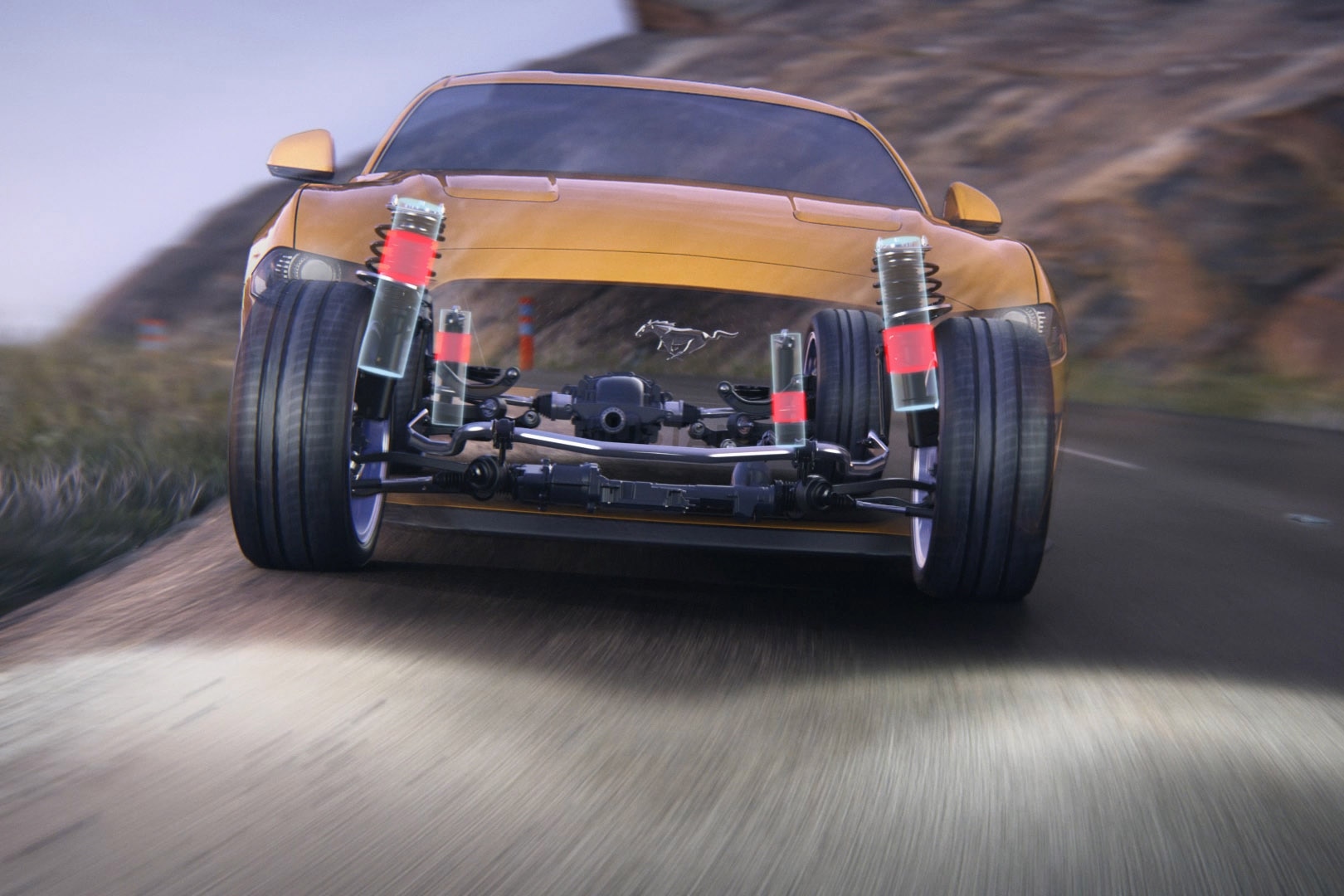What is a MagneRide Suspension?
While magnetic forces may not be able to hold your vehicle to the road, they can help improve its ride and handling.
 Ford
Ford
Once upon a time, a comfortable ride and sporty handling were almost mutually exclusive traits in a car. But magnetorheological dampers — better known as magnetic ride control or the trademarked name MagneRide — help automakers deliver the best of both worlds.
 Ford
Ford
Active shock absorbers are a key component
Many components in a vehicle'’s suspension help determine ride and handling qualities, but dampers — sometimes called "shock absorbers" — are a big piece in that puzzle, as they absorb impacts and control body motions by compressing a gas or fluid within a cylindrical tube.
Dampers can be engineered to behave differently for a variety of vehicle types. For example, an easily compressible damper can provide a smooth ride. And while that might be ideal for a passenger car, it's likely too soft to resist the hard cornering forces generated when a sports car is pushed to its limits.
Conversely, a firmer damper can reduce body roll and improve handling in a performance vehicle. But this comes at the expense of comfort, especially over potholes, expansion joints, and other road imperfections.
 Chevrolet
Chevrolet
Electromagnetic fields change the shock's characteristics
Magnetorheological dampers help bridge this divide. In basic principle, magnetic ride control dampers function similarly to a conventional shock absorber, but they compress a fluid containing microscopic magnetic particles instead of standard hydraulic fluid.
Normally, these particles float freely within the fluid, making the liquid easy to compress and the damper soft enough for everyday ride comfort. But applying an electromagnetic field to the fluid aligns the particles in a manner that resists compression. And voilà, you now have a firm damper.
Compared with other types of adjustable dampers, which usually rely upon internal valves, magnetic dampers use fewer moving parts. They also offer a wider range of adjustment and can change the damping rate far more quickly. Exactly how involved the driver is in this process varies. In most applications, a car or SUV equipped with magnetic ride — say, a Cadillac Escalade or a GMC Yukon Denali — uses sensors to continuously adjust dampers in real time, up to thousands of times per second.
On performance cars available with magnetic ride control, such as the Chevrolet Corvette Z06 or the Ford Mustang Mach 1, selecting sport mode will also firm up the suspension to improve handling.
 GMC
GMC
High-tech suspension comes at a cost
While magnetic ride suspension technology can improve ride quality and handling, it isn't universally available. And when it is an option, it can be expensive. For instance, magnetic ride suspension costs $1,895 on the aforementioned Corvette, while GMC only offers it on the top trims of its Yukon SUVs.
If you plan on long-term ownership of your vehicle, you may also want to consider the costs of maintaining a magnetic ride suspension. While there are fewer moving components to age and fail — at least compared with other adjustable suspension systems — magnetic dampers will still reach a point where replacement is warranted.
Predictably, replacements for these high-tech dampers also carry significant added cost, and may only be available through your dealer's parts counter.
Written by humans.
Edited by humans.
 Evan McCausland
Evan McCauslandCar, truck, train, or bus—if a vehicle has wheels, chances are Evan McCausland is interested in it. More importantly, he’s interested in helping others learn more about cars and trucks, especially when it comes time to make a decision on their next vehicle purchase. For nearly two decades, he’s been fortunate to have the opportunity to do just that, writing for major automotive publications, automotive clubs, and automakers alike.
Related articles
View more related articles